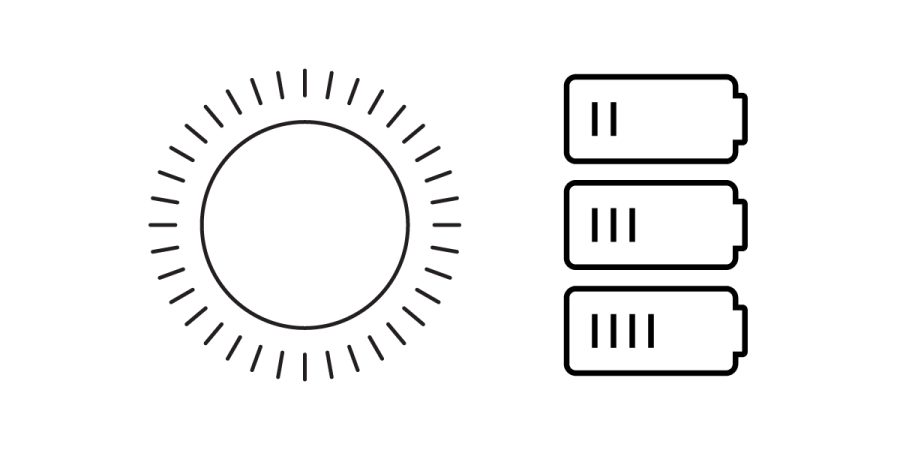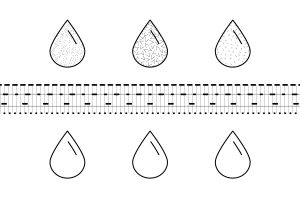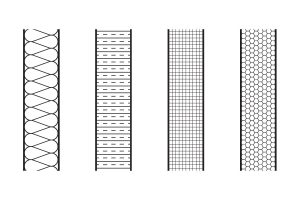Photovoltaic Systems (PVs)
Photovoltaic systems are products that control the direct conversion of sunlight into electricity. PVs are made from various types of semiconductor materials. The cells convert the sunlight into direct current (DC) electricity, which is then converted into alternating current (AC). The system then lets you use the electricity right away, store it in batteries, or sell it back to the system for money (town/agency permitting).
PVs can either be in a multicell array, or built into other materials.
- In an array, the PV is constructed in frames and attached to an area with good solar exposure.
- Note: The IBC requires that PV panels comply with the general code requirements for rooftop materials and structures. This includes fire resistance, wind resistance, material standards, and installation. The systems must also comply with the International Fire Code.
- Note: PV technology is constantly increasing, improving, and changing — and manufacturers now provide 20+ year warranties. Many localities will now also provide tax incentives to help offset the cost.
Net Metering: The requirement that a utility pay and charge the same rate regardless of which direction the electricity is flowing.
- This allows people to sell electricity back to the grid, without being compensated at a lower value.
3 Main Types:
1. Crystalline (Monocrystalline)
- Most widely used and produce the most power – also the most expensive.
2. Polycrystalline:
- Less expensive than Crystalline, but produce less power
3. Thin-Film Cells (Amorphous)
- Can be deposited onto other materials and are ideal when the cells need to be fused with another building material. Provide ⅓ the power generation of the crystalline type.
Advantages to PVs
- Creates a renewable resource. Helps a building achieve energy independence.
- Produces no pollution in the act of producing the energy.
- Energy can be stored or sold back. In times of lower demand, you can make money.
Disadvantages to PVs
- Typically a very high initial cost (can be offset with incentives)
- Requires a location that receives adequate sunlight. Normally on a roof and is rather prominent.
- Lower winter production, and no production at night.
- Some jurisdictions may limit, or have restrictive requirements for PV systems.
- Storage batteries pose a fire hazard, and can be difficult to maintain, with a large space requirement.
Design Considerations
The biggest aspect to a PV array is to consider where they will be located on a project. Because of the benefit and due to the cost of the PVs, you will generally want to maximize their return by locating them appropriately. This for example means in the Northern hemisphere, you’d want them facing South. This will orient the PVs to maximize their return from the direct sunlight hitting them.
- For best energy generation, the tilt angle should match the latitude of the building. During winter, the tilt angle should be 10° to 15° greater due to the lower sun in the sky, and to help shed snow if it occurs.






Leave a Reply
You must be logged in to post a comment.